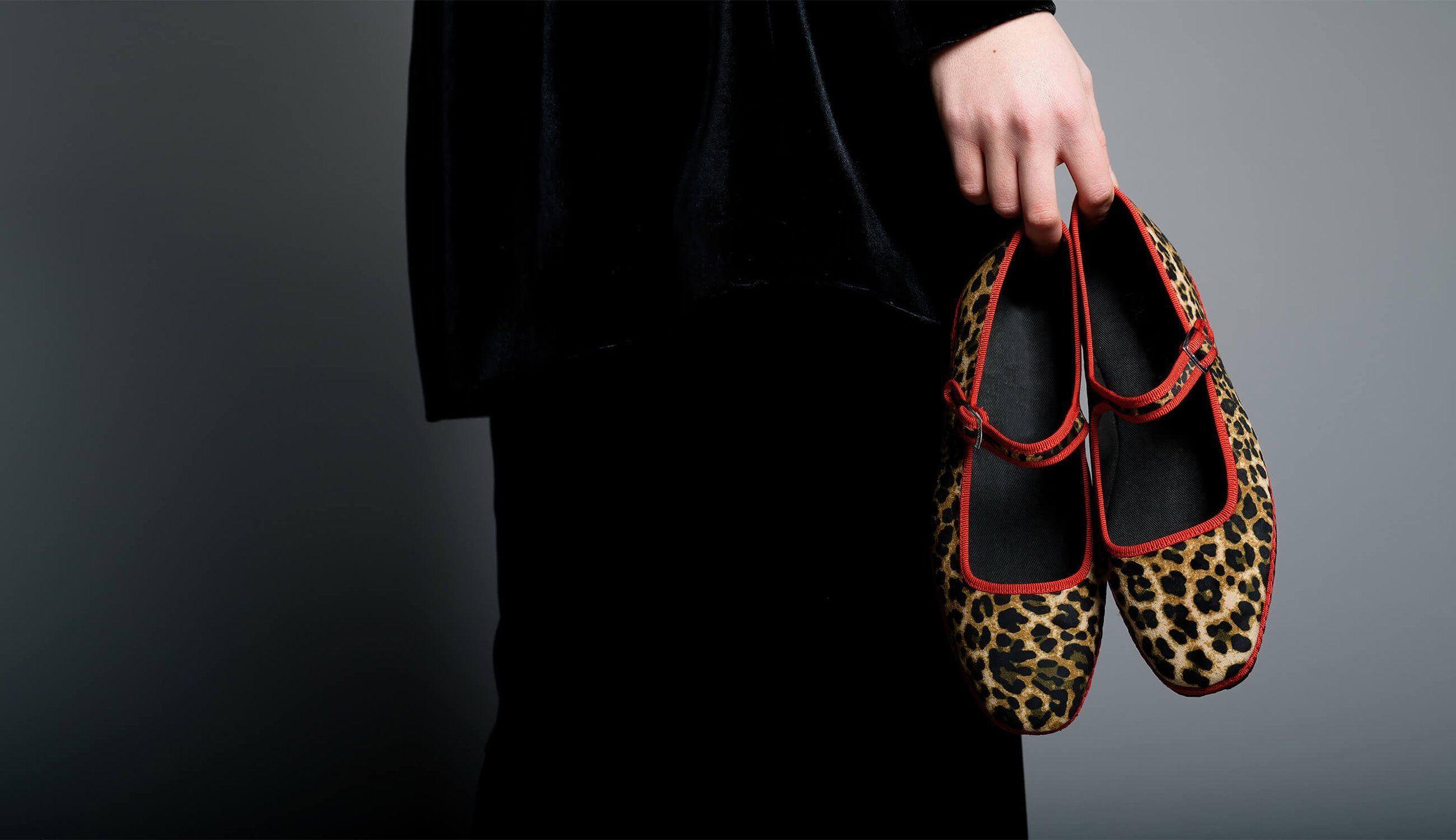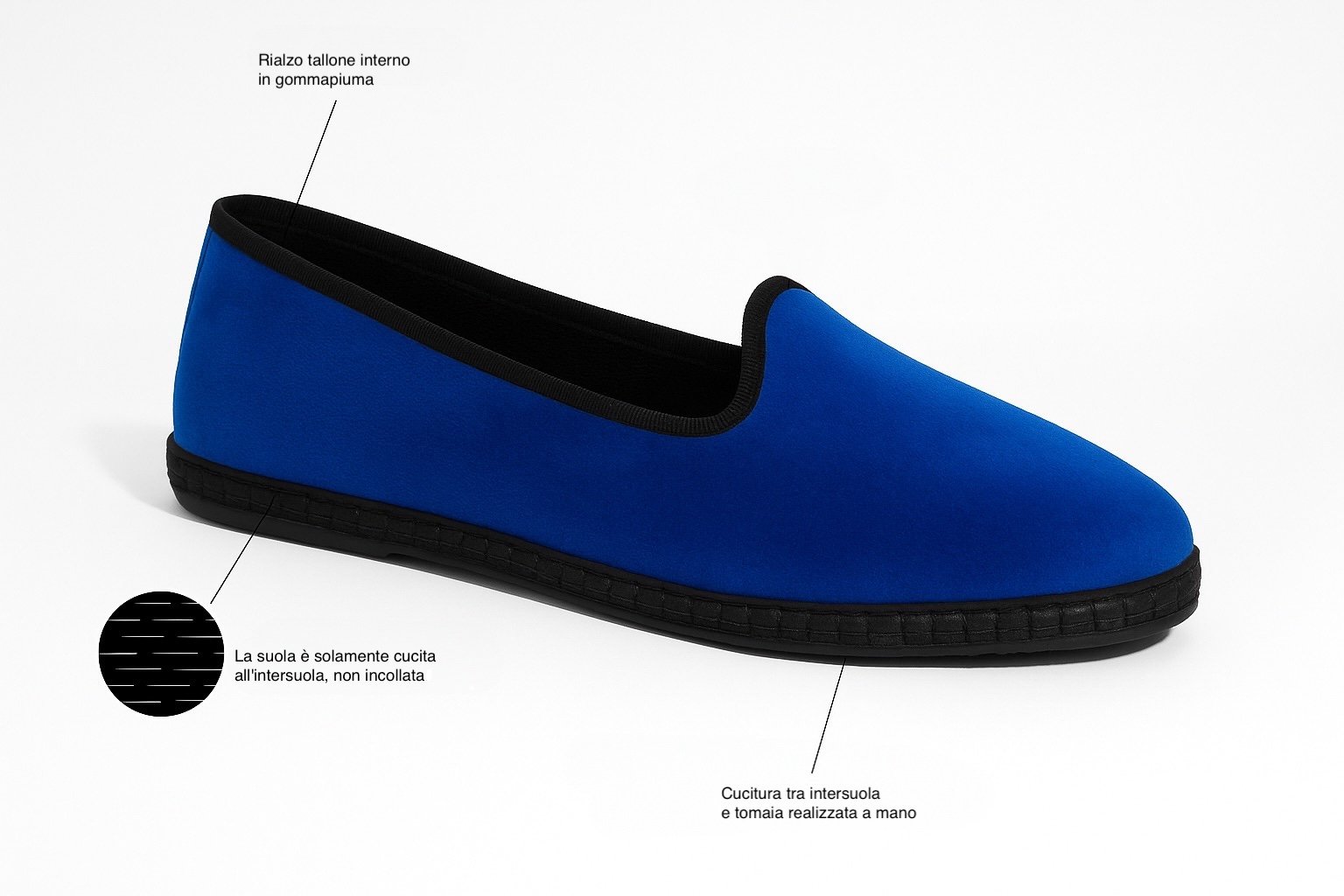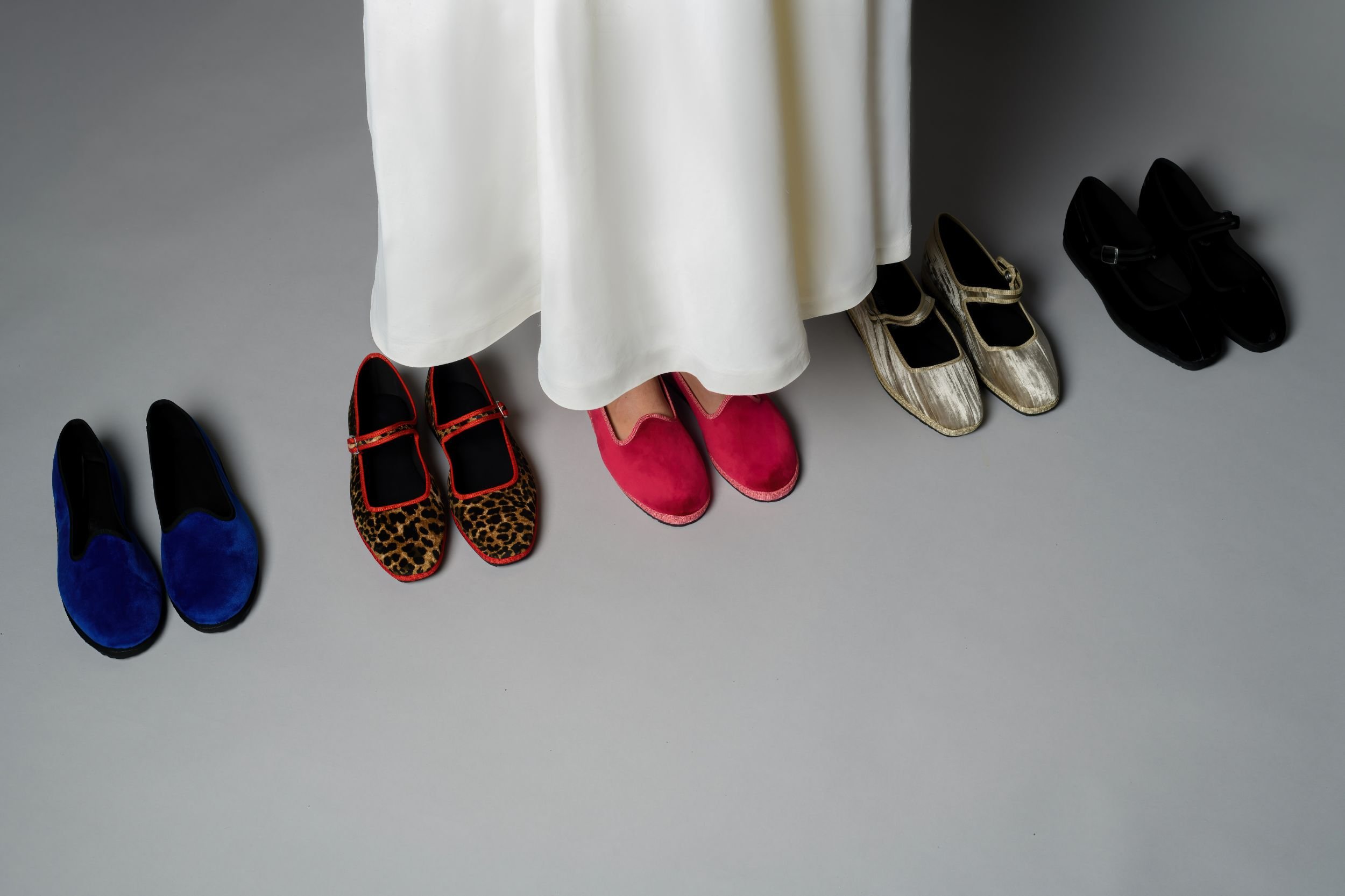
The Friulana: A Quiet Icon
Centuries of Italian craftsmanship, still stitched into every step.
How They’re Made
At Due Lune, every pair is made in Italy by skilled artisans who carry on the centuries-old Friulian tradition. Each step is done by hand, and no two pairs are ever truly the same.
Cutting: Velvet, grosgrain, and recycled components are precisely cut for perfect form.
Sewing: Each upper is stitched by hand - over 1,200 stitches per pair - for strength, softness, and flexibility.
Sole Assembly: Layers of reinforced fabric and recycled rubber are stitched (never glued) to form a flexible but durable base.
Union: The sole is hand-sewn to the upper with the signature punto strega - a curved seam that locks everything in place.
Finishing: Grosgrain borders, subtle piping, and inner structure are added for both comfort and elegance.
Time to complete: 3 to 5 hours per pair. Longer for custom, embroidered, or specialty designs. Every shoe is a little bit irregular - and that's the point. It’s a mark of craft, not a flaw.
A Quiet Icon: The Story of the Friulana
Hand-stitched in Friuli since the 1800s, these once-humble Sunday shoes now walk the line between tradition and quiet luxury.
Before they turned heads on fashion week sidewalks or slipped into the wardrobes of style icons, the Friulane were the humble Sunday shoes of 19th-century women in Friuli - a quiet, mountainous region in northeastern Italy, nestled between Venice and the Alps. Stitched by hand using scraps of fabric, grain sacks for lining, and even old bicycle tires for soles, they were worn to church, weddings, and family gatherings - simple, yes, but made with extraordinary care. And every village, sometimes every family, had its own signature version: a twist in the toe shape, a particular embroidery, a distinct stitch that turned utility into identity.
Fast-forward, and these whisper-soft slippers have gracefully danced from the countryside to the canals of Venice. Gondoliers in the postwar years embraced them for their rubber soles - silent on wood, and blessedly non-slip. Legend has it that aristocrats picked up the trend, not only for their elegant look and the romance of tradition, but for their stealthy, quiet tiptoe. A quiet entrance, a quiet escape. Enough said.
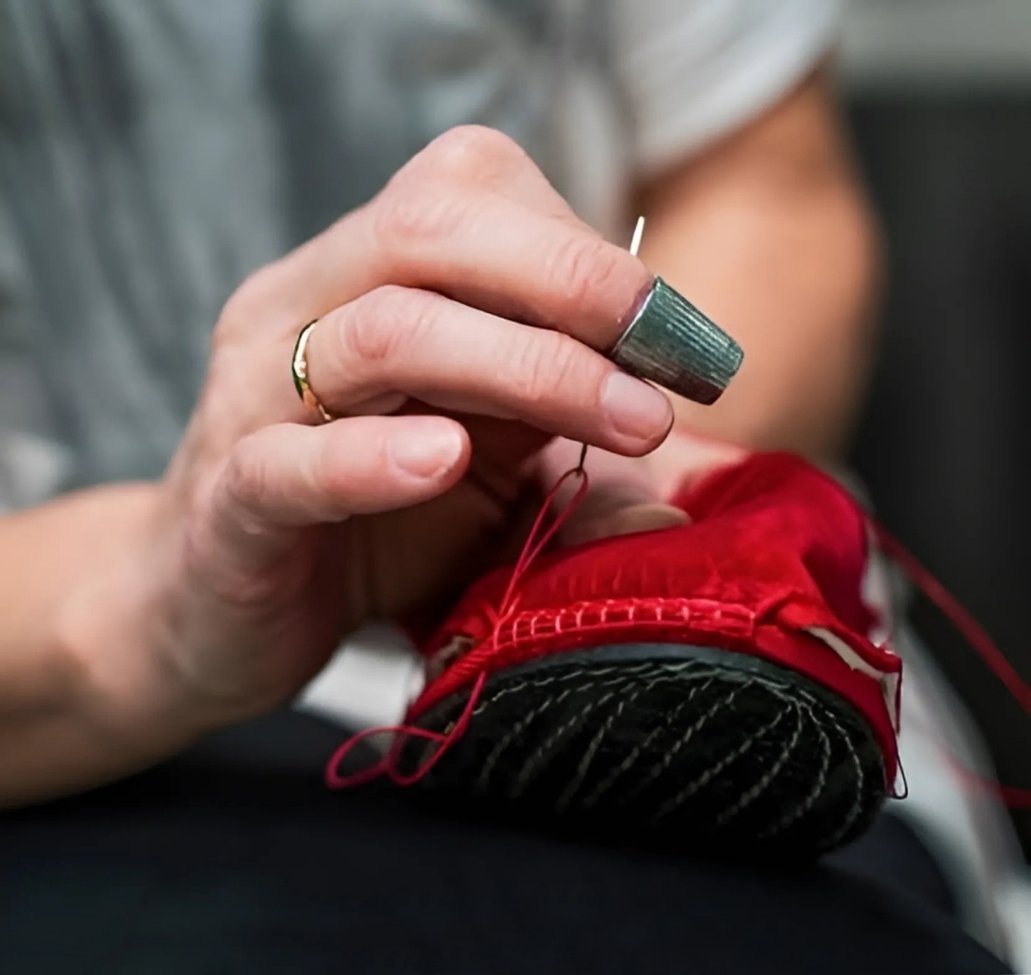
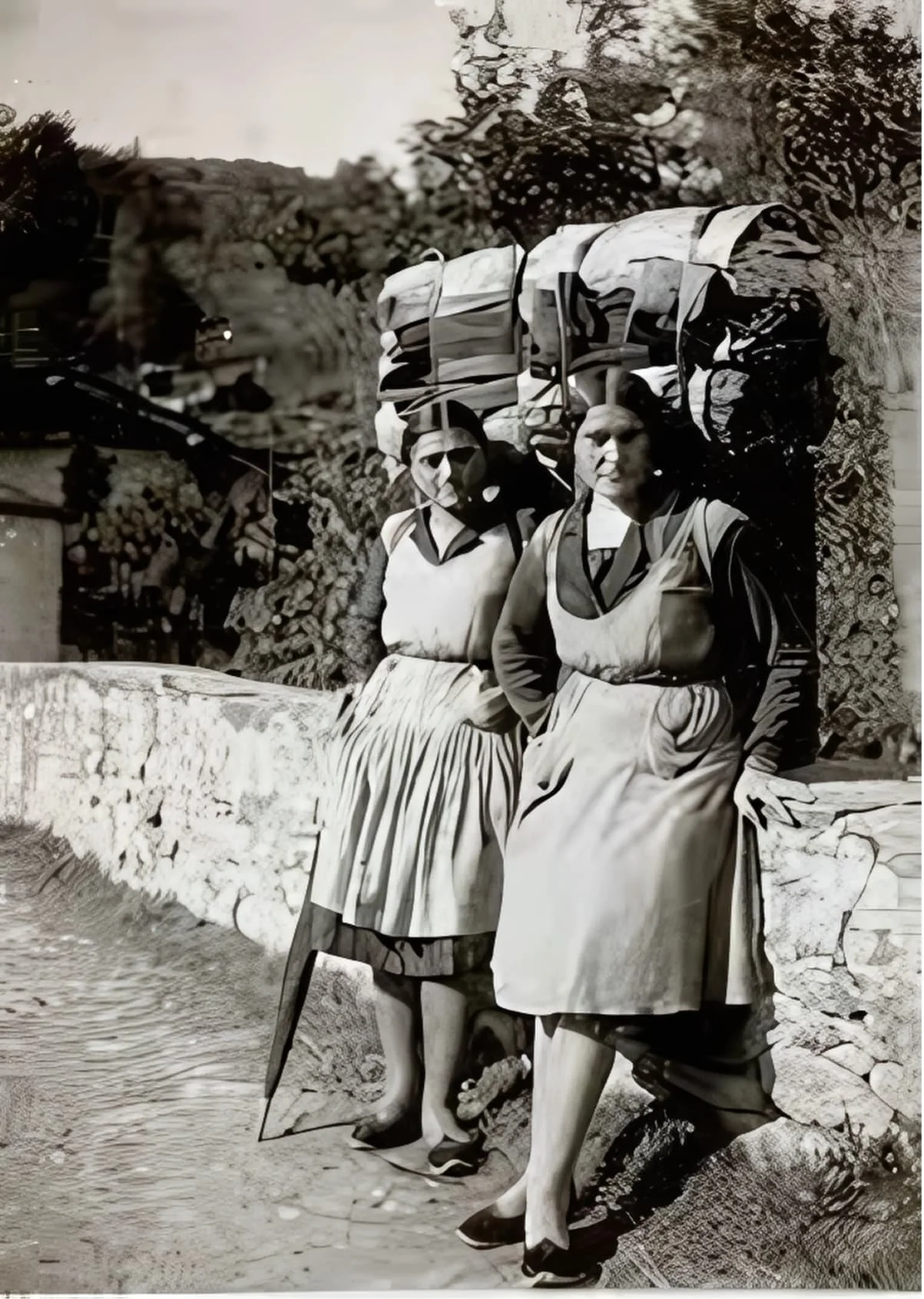
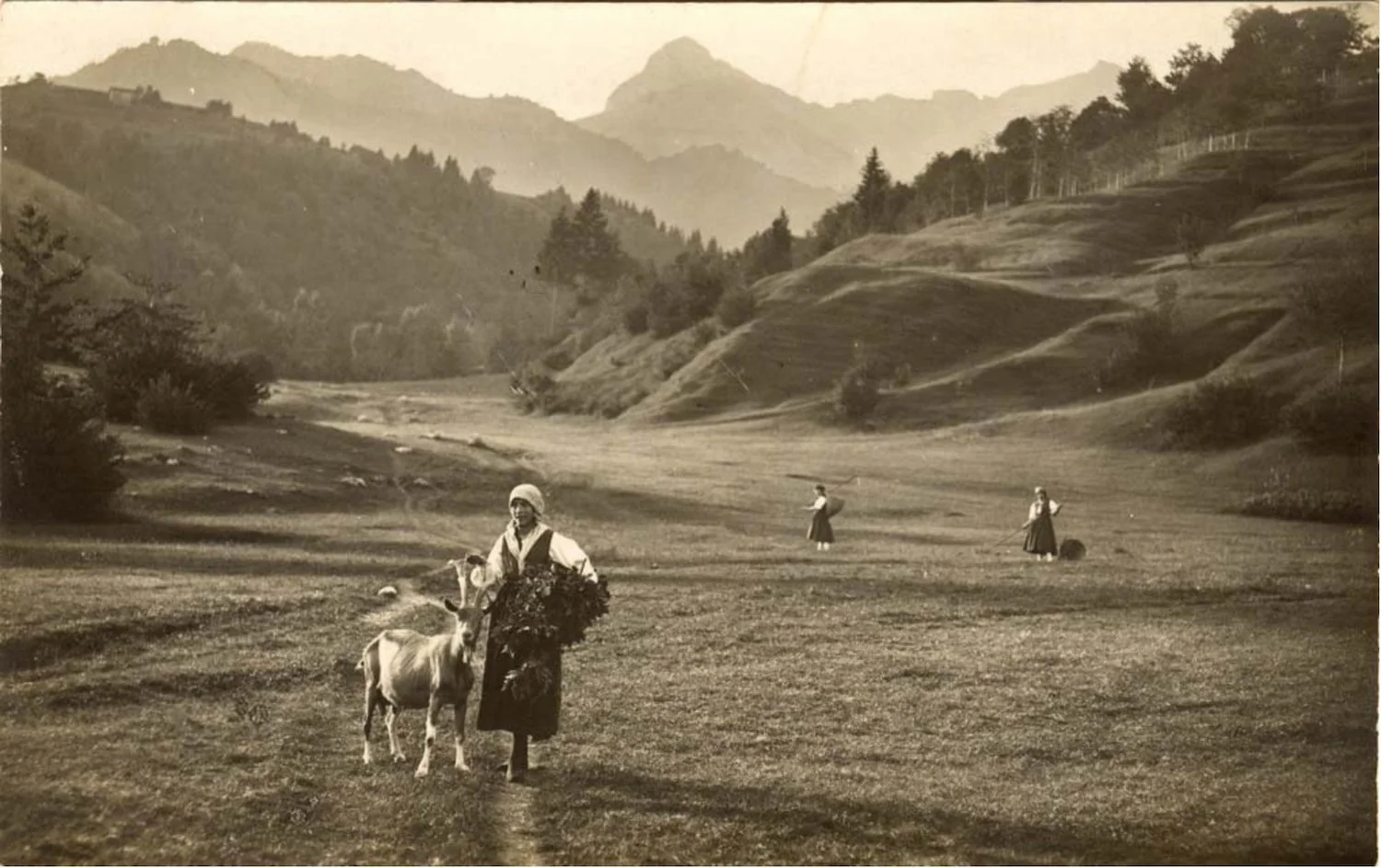


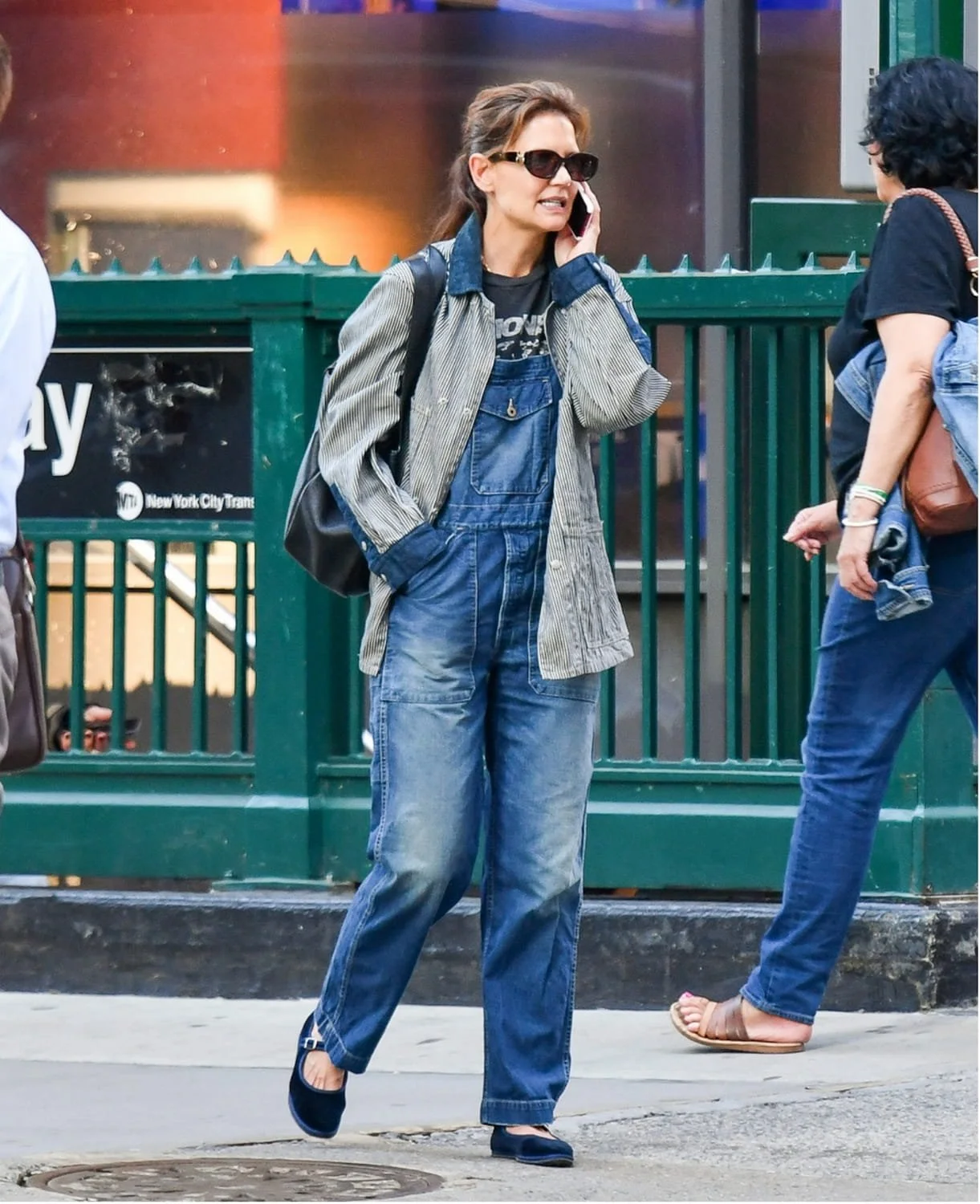
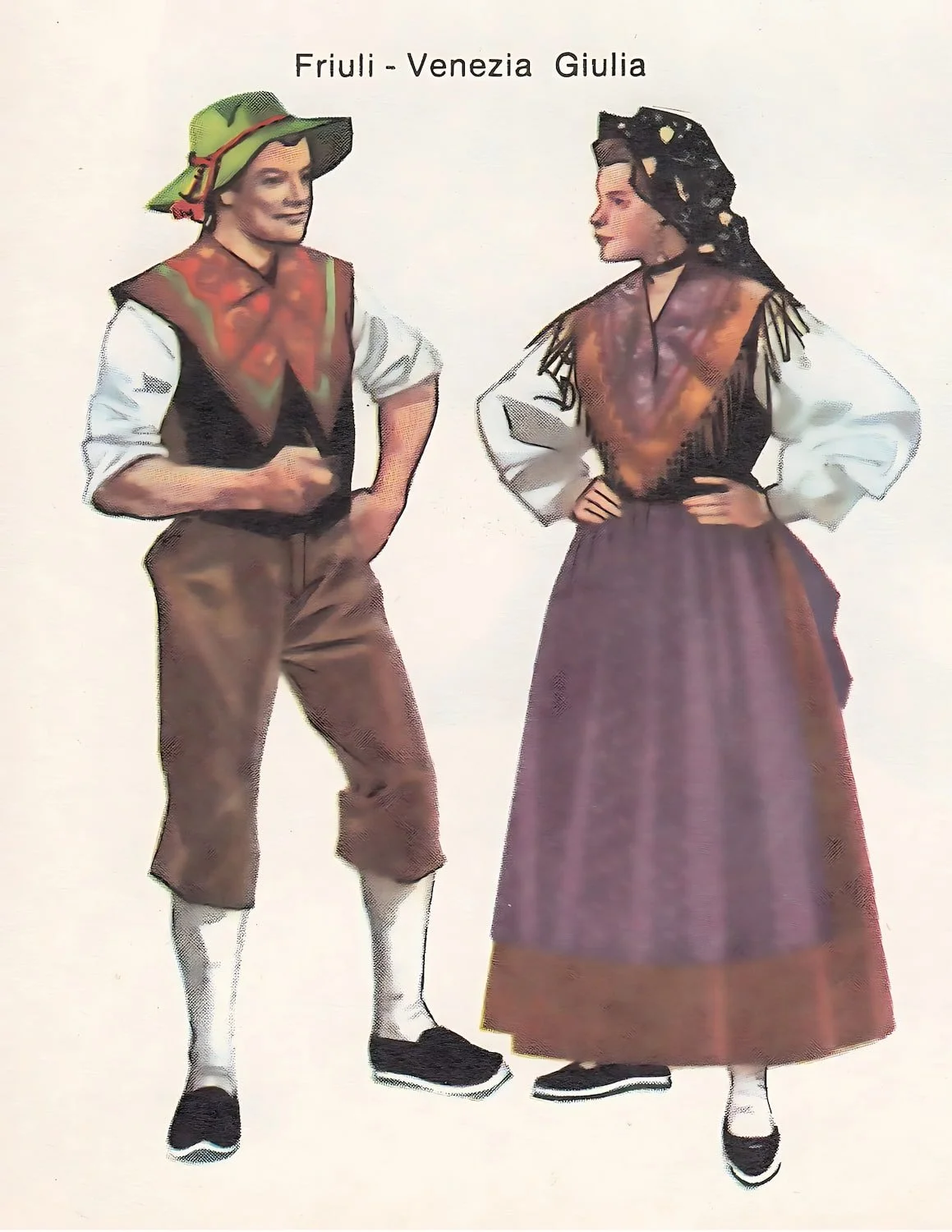



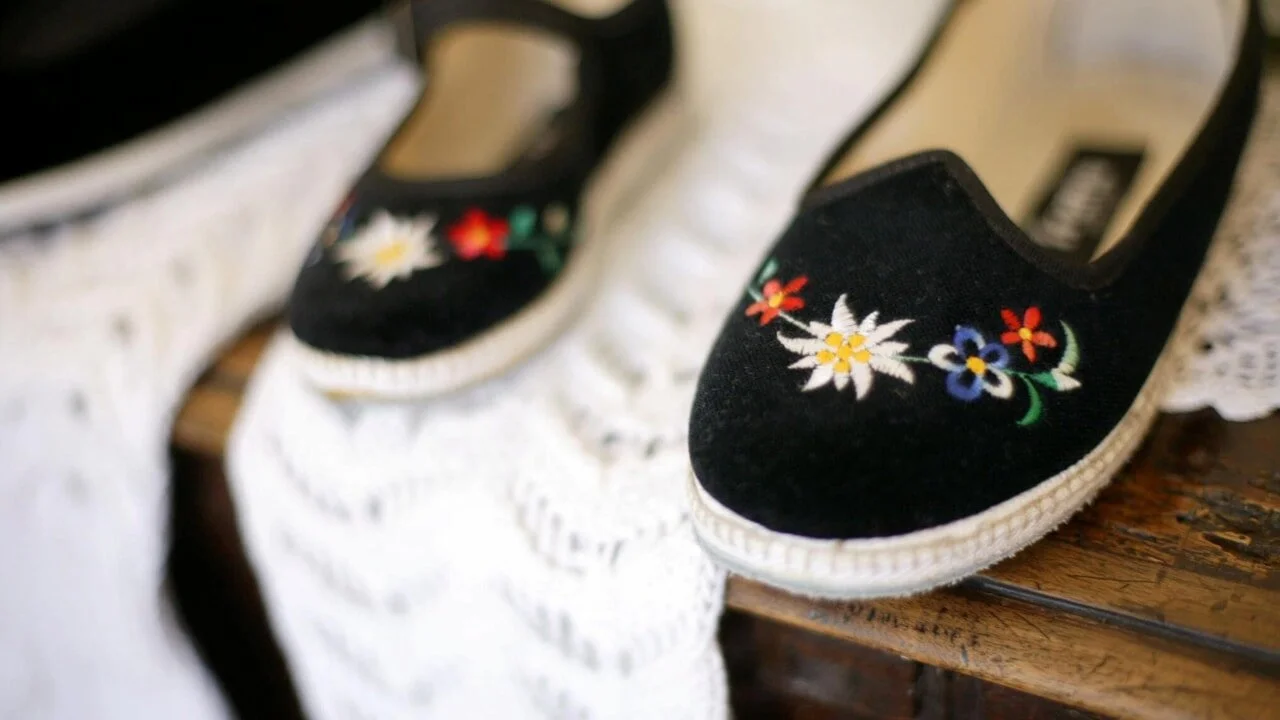
A Style Reimagined
Today, the Friulana is a paradox in the best way: genderless by design, glamorous in spirit, and made to be effortlessly comfortable. From country roots to catwalks, this shape has endured for centuries without losing its edge. It’s become a modern cult favorite, seen on the feet of icons like Kate Moss, Katie Holmes, Beatrice Borromeo - even Giorgio Armani, who famously wears his furlane both in and out of the house.
They're street-style darlings, boutique heroes, and quiet luxuries in a world of fast fashion. And still, they carry the DNA of their origin: purpose, personality, and handmade precision.
Past meets present - beautifully.
Did You Know?
Friulane were one of the first “eco” shoes - made with upcycled materials long before sustainability had a name.
Their signature velvet uppers are both luxurious and practical - breathable, durable, and perfect year-round.
Gondoliers loved them for their grip. Aristocrats loved them for their silence
